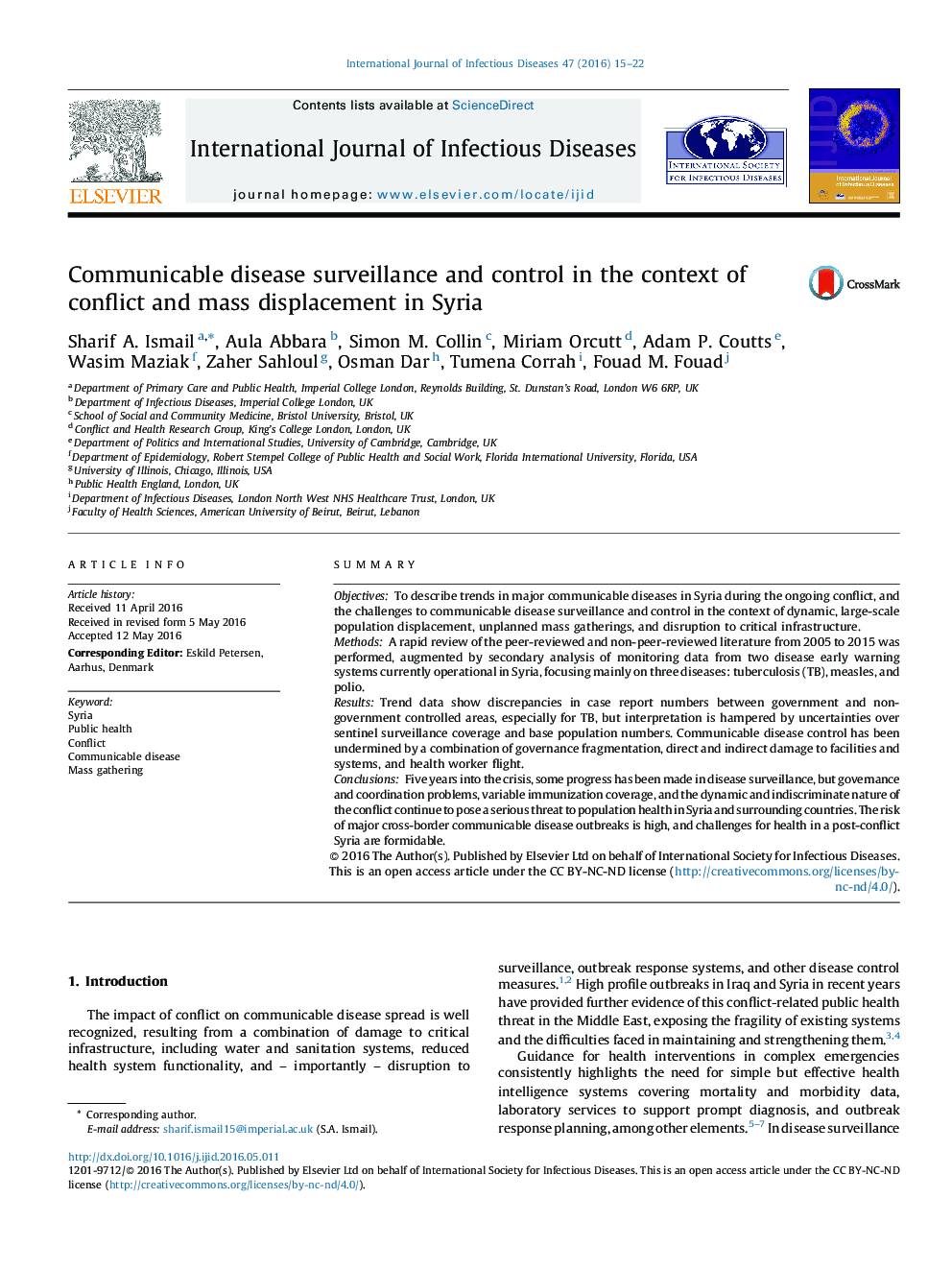| Article ID | Journal | Published Year | Pages | File Type |
|---|---|---|---|---|
| 3361777 | International Journal of Infectious Diseases | 2016 | 8 Pages |
•Two parallel communicable disease surveillance systems now operate in Syria.•Surveillance is complicated by variable geographical coverage and outbreak thresholds.•Laboratory services have been crippled by conflict damage and health worker losses.•Despite a 2013–14 polio outbreak, preparedness and response remains mainly post hoc.•Vaccination coverage is poor due to insecurity, poor coordination, and access problems.
SummaryObjectivesTo describe trends in major communicable diseases in Syria during the ongoing conflict, and the challenges to communicable disease surveillance and control in the context of dynamic, large-scale population displacement, unplanned mass gatherings, and disruption to critical infrastructure.MethodsA rapid review of the peer-reviewed and non-peer-reviewed literature from 2005 to 2015 was performed, augmented by secondary analysis of monitoring data from two disease early warning systems currently operational in Syria, focusing mainly on three diseases: tuberculosis (TB), measles, and polio.ResultsTrend data show discrepancies in case report numbers between government and non-government controlled areas, especially for TB, but interpretation is hampered by uncertainties over sentinel surveillance coverage and base population numbers. Communicable disease control has been undermined by a combination of governance fragmentation, direct and indirect damage to facilities and systems, and health worker flight.ConclusionsFive years into the crisis, some progress has been made in disease surveillance, but governance and coordination problems, variable immunization coverage, and the dynamic and indiscriminate nature of the conflict continue to pose a serious threat to population health in Syria and surrounding countries. The risk of major cross-border communicable disease outbreaks is high, and challenges for health in a post-conflict Syria are formidable.
